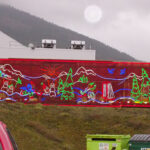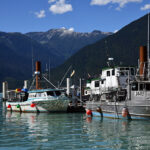Home »

33 groups call for federal assessment of Castle mine
Thirty-three conservation groups in Canada and the United States have now joined the call for a federal environmental assessment of Teck’s proposed Castle coal mine in the Elk Valley.
With concerns about long-term water pollution, carbon emissions, bighorn sheep and other wildlife, the Ktunaxa Nation, US Kootenai Tribes, the US EPA and Montana have all already asked federal Environment Minister Jonathan Wilkinson to review the proposed mine.
The groups, including the US Sierra Club, Amnesty International Canada and Nature Canada, join more than 750 people who have sent messages in support of Canada’s highest level of environmental assessment for the coal mine.
The Castle mine, which Teck bills as an expansion of the Fording River mine, would ship coal overseas for 35 years, removing Castle Mountain and its bighorn sheep habitat in the process. The mine would add more water pollution to a highly contaminated stretch of the Fording River, where the westslope trout population collapsed over the past two years. Further downstream, selenium and other pollution from the mine would add to growing risks for fish in the Elk River, Lake Koocanusa and the Kootenai River, even as far downstream as Creston.
“Over the last decade, we’ve seen weak provincial environmental assessments for coal mines in the Elk Valley that have allowed water pollution way above safe limits,” said Lars Sander-Green of Wildsight, “so that’s why we need a federal assessment to make sure our clean water and fish are protected—now and in the long-term.”
For the 17 US groups asking for the federal assessment, water pollution in the Kootenai River through Montana and Idaho is the main concern, especially when it comes to endangered white sturgeon who range between Kootenay Lake in Canada and the Kootenai River in the US. The Kootenai Tribe of Idaho, who have also asked for a federal assessment, consider themselves the guardians of the sturgeon and the river they call home.
“As much as the province of B.C. would like to think otherwise, the impacts of their projects absolutely extend beyond their borders,” said Dave Hadden of Headwaters Montana. “These are transboundary issues with international implications, and they require a federal response.”
The federal government is responsible for assessing pollution and other environmental impacts across borders, while previous provincial assessments have only looked at coal mine pollution as far south as the US border.
For Canadian conservation groups, water pollution isn’t the only reason that a federal assessment is needed.
“The Castle mine would destroy a lot of high-elevation grassland habitat, which is critically important bighorn sheep, and it would make it harder for grizzly bears and wolverines to travel up and down the continental divide” said Randal Macnair of Wildsight.
The groups also urge the Minister to consider the climate impacts of coal mining, when lower-carbon alternatives to coal in steelmaking are already in use around the world.
“The steelmaking coal coming out of the Elk Valley adds more carbon pollution to our atmosphere than all our emissions in the entire province,” said Lars Sander-Green of Wildsight. “Committing to 35 more years of coal mining now would be a big mistake when we know we have to reduce our carbon emissions to near zero, including in the steelmaking industry, much sooner than 2060.”
Environment Minister Jonathan Wilkinson has until August 19 to decide whether to order a federal assessment for the Castle mine.
“If B.C. and Teck are as confident as they say they are that they have the long-term water pollution problem under control, then what should they have to worry about from a federal environmental assessment?” added Macnair.

Lead image: Photo of Castle Mountain and the adjacent Fording River mine. Photos courtesy Wildsight
Submitted by Lars Sander-Green, Mining Coordinator, Wildsight







